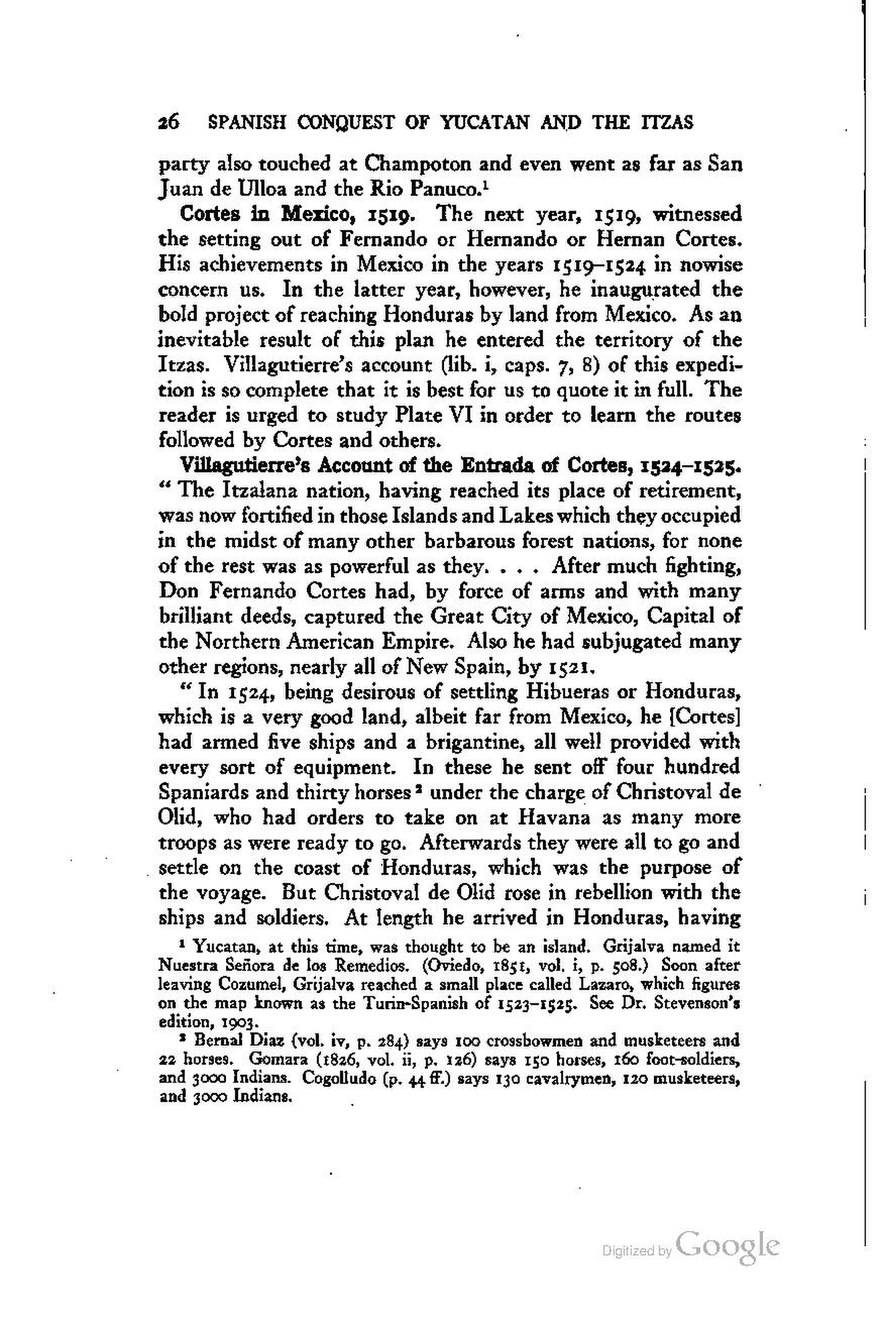party also touched at Champoton and even went as far as San Juan de Ulloa and the Rio Panuco.[1]
Cortes in Mexico, 1519. The next year, 1519, witnessed the setting out of Fernando or Hernando or Hernan Cortes. His achievements in Mexico in the years 1519-1524 in nowise concern us. In the latter year, however, he inaugurated the bold project of reaching Honduras by land from Mexico. As an inevitable result of this plan he entered the territory of the Itzas. Villagutieirre's account (lib. i, caps. 7, 8) of this expedition is so complete that it is best for us to quote it in full. The reader is urged to study Plate VI in order to learn the routes followed by Cortes and others.
Villagutierre's Account of the Entrada of Cortes, 1524-1525. "The Itzalana nation, having reached its place of retirement, was now fortified in those Islands and Lakes which they occupied in the midst of many other barbarous forest nations, for none of the rest was as powerful as they....After much fighting, Don Fernando Cortes had, by force of arms and with many brilliant deeds, captured the Great City of Mexico, Capital of the Northern American Empire. Also he had subjugated many other regions, nearly all of New Spain, by 1521.
"In I524, being desirous of settling Hibueras or Honduras, which is a very good land, albeit far from Mexico, he [Cortes] had armed five ships and a brigantine, all well provided with every sort of equipment. In these he sent off four hundred Spaniards and thirty horses[2] under the charge of Christoval de Olid, who had orders to take on at Havana as many more troops as were ready to go. Afterwards they were all to go and settle on the coast of Honduras, which was the purpose of the voyage. But Christoval de Olid rose in rebellion with the ships and soldiers. At length he arrived in Honduras, having
- ↑ Yucatan, at this time, was thought to be an island. Grijalva named it Nuestra Señora de los Remedios. (Oveido, 1851, vol. i, p. 508.) Soon after leaving Cozumel, Grijalva reached a small place called Lazaro, which figures on the map known as the Turin-Spanish of 1523-1525. See Dr. Stevenson's edition, 1903.
- ↑ Bernal Diaz (vol. iv, p. 284) says 100 crossbowmen and musketeers and 22 horses. Gomara (1826, vol. ii, p. 326) says 150 horses, 160 foot-soldiers, and 3000 Indians. Cogolludo (p. 44 ff.) says 130 cavalrymen, 120 muskteteers, and 3000 Indians.
